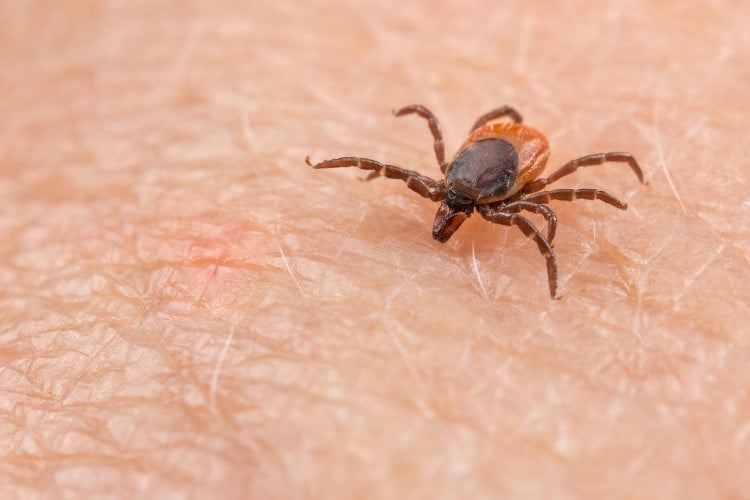- Climbing at least five flights of stairs a day can cut the risk of cardiovascular disease by about 20%, according to new research.
- Climbing stairs is a form of vigorous intermittent lifestyle physical activity (VILPA), which has a range of benefits including reduced cancer and mortality risk.
- According to experts, climbing more stairs is a low-cost, accessible way to add more necessary physical activity to your daily life.
If you’re paying attention to how many steps you take a day, you may want to make sure about 50 of them are on a set of stairs.
Climbing at least five flights of stairs a day—which equates to about 50 stairs—may slash your risk for cardiovascular disease by about 20%, according to a new study published in the journal Atherosclerosis.
The research shows that regular, heart-healthy exercise does not have to be expensive or time-consuming—and that something as simple and publicly available as a set of stairs can have a large impact on health.
“Short bursts of high-intensity stair climbing are a time-efficient way to improve cardiorespiratory fitness and lipid profile, especially among those unable to achieve the current physical activity recommendations,” study corresponding author Lu Qi, MD, PhD, HCA Regents Distinguished Chair and professor at the Tulane University School of Public Health and Tropical Medicine, said in a news release.
“These findings highlight the potential advantages of stair climbing as a primary preventive measure for [atherosclerotic cardiovascular disease] ASCVD in the general population,” Qi added. ASCVD, combined with coronary artery disease and stroke, are the leading causes of death worldwide.
Here’s what to know about why climbing stairs can help support heart health, and how to add more steps (and stairs) to your daily routine.

aldomurillo/Getty Images
Climbing Stairs for Better Heart Health
For the study, researchers from Tulane University evaluated data from more than 450,000 adults in the U.K. The team looked at their lifestyle habits, which included how many stairs they climbed each day. The researchers also assessed each person's family history, genetic risks, and other risk factors for cardiovascular disease.
Over the course of 12.5 years, just over 39,000 people developed cardiovascular disease—a group of diseases that affect the heart and blood vessels. Coronary artery disease, the most common cardiovascular disease in the U.S., can cause heart attacks and strokes.
Climbing about 50 stairs daily reduced the risk of cardiovascular disease in people less prone to it, the researchers found. But people with a higher risk for cardiovascular disease may also be able to offset that risk by taking the stairs, Qi said in the news release.
Interestingly, people who started off climbing stairs and then stopped had a 32% higher risk of developing cardiovascular disease compared to those who didn’t climb stairs regularly.
“This research shows us that it’s not always necessary to set aside time for exercise in order to see real health benefits from getting active,” Harmony Reynolds, MD, director of the Sarah Ross Soter Center for Women’s Cardiovascular Research at NYU Langone Health in New York City, told Health.
“Climbing at least five flights of stairs a day lowers the risk of cardiovascular disease, including climbing just one flight at a time, at least five times in a day,” Reynolds added.
Out of Breath Walking Up Stairs? Here's Why—and 3 Things To Do About It
How Climbing Stairs Differs From Walking
The act of climbing stairs is what’s known as vigorous intermittent lifestyle physical activity (VILPA).
Past research has shown this kind of movement—which also includes carrying heavy groceries or running to catch the train—supports health by boosting aerobic activity and improving lipid levels and body composition.
“It is more vigorous than the same number of steps on the flat [surface],” William E. Kraus, MD, a cardiologist at Duke Health in Durham, NC, told Health. “More like combining aerobic and strength training in one bout.”
But the benefits of VILPA don’t stop there—these quick, intense bursts of movement have also been shown to have a substantial impact on a person’s longevity, reduce cancer risk, and lower your chances of developing metabolic syndrome—a potential precursor for cardiovascular disease.
”Climbing stairs is great exercise,” Reynolds said. “For most people, climbing stairs is more vigorous exercise than walking.”
That’s not to say walking doesn’t have health benefits—it does, Reynolds said. Walking remains one of the most accessible ways to stay active—it can help improve sleep, lessen anxiety, aid in blood sugar and blood pressure control, and aid in weight management.
What Is the 25-7-2 StairMaster Workout—And Should You Try It?
How to Incorporate More Stairs Into Your Routine
Instead of looking for ways to get in more steps, think about places you can go that have stairs—then start moving.
“Take the stairs instead of the elevator or escalator when you can,” Reynolds recommended.
The same goes for when you’re home if your home has stairs. A 2021 study found climbing stairs at home was just as good as a stair machine at the gym.
“The next time you forget something on another floor of your home, go right up and get it, for your heart,” Reynolds said.
Even though the study doesn’t say how long you have to climb to see benefits, Reynolds shares tips for adding more activity into your day (and it doesn’t have to include taking the stairs if they’re not your thing).
“If stair climbing doesn’t work for you, think about what exercises you can do, like getting up from a chair over and over again using your leg muscles. Every bit of exercise counts,” Reynolds said.
Regardless of the exercise you choose, start out with 10 to 15 minutes of activity a day, and then build up. The American Heart Association recommends that adults get at least 150 minutes (2.5 hours) of moderate to vigorous activity per week, she said.
“Thirty minutes a day, five days a week is an easy goal to remember. Some people will be able to do more. It's important to set realistic goals based on your own health and abilities,” Reynolds said.
Even though the researchers said at least five flights was enough to see benefits, it’s unclear if climbing more daily would yield a higher risk reduction.
“I do not know if this is the sweet spot,” Kraus said. “I would imagine that 10 flights are better than five, and 15 are better than 10.”
Remember, moving is just one part of reducing your risk for cardiovascular disease. Eating well, managing your weight, and skipping cigarettes can also lower your risk for cardiovascular disease.








